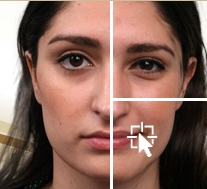Humintell wants to spread the love.
This short but inspiring video shows that as people we interact, express and feel emotions in a variety of ways.
A reminder that many of the emotions we encounter on a daily basis are a conscious choice.
Click here to view the embedded video.
What Emotions Will You Experience Today?
 The FBI’s March 2014 Bulletin featured important interviewing techniques and detailed information on reading people. Drs. David Matsumoto, Humintell’s Director, and Hyisung Hwang as well as former FBI Special Agent Lisa Skinner commented on the scientific evidence behind behavioral anomalies that they have found through years of research and training.
The FBI’s March 2014 Bulletin featured important interviewing techniques and detailed information on reading people. Drs. David Matsumoto, Humintell’s Director, and Hyisung Hwang as well as former FBI Special Agent Lisa Skinner commented on the scientific evidence behind behavioral anomalies that they have found through years of research and training.